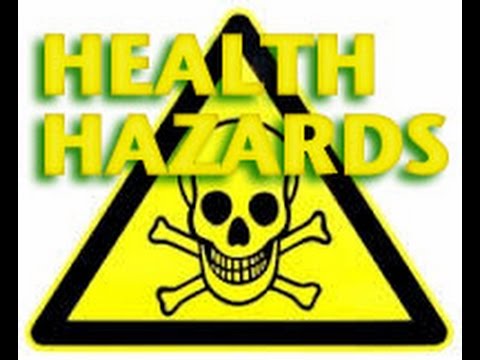Firefighters are an adventurous, courageous group who risk their lives daily to save others. They often face the worst situations and conditions to keep us safe. However, this also means they are at an increased risk of injury or illness compared to other occupations. Almost 60,750 injuries occurred in the line of duty in 2021.
Firefighting is dangerous, but some strategies can help firefighters protect their health and prevent long-term effects on their bodies from working in such demanding conditions. To build these strategies, it is vital to first learn about the health hazards they face.
Table of Contents
Immediate Risks and Injuries
Firefighters are exposed to various hazards as they respond to and fight fires. The most common risks include smoke, heat, and toxic gases. There are also high chances of falls from heights, burns, and electrocution.
When responding to an emergency call for assistance at a burning structure or vehicle accident scene, firefighters must be prepared for any hazardous situations during their time at the scene. First responders must deal with both the immediate risks posed by fire and those related to other conditions associated with these types of emergencies.
Firefighters may also face long-term health problems due to repeated exposure, especially if they do not take proper precautions during each shift.
Long-Term Health Impacts
The long-term health impacts of working as a firefighter can be severe and preventable. In fact, many of them can be mitigated by simple changes in behavior and routine.
For example, firefighters risk developing musculoskeletal issues such as carpal tunnel syndrome or tendonitis due to repetitive motions involved with their jobs. Almost 54% of firefighters reported a musculoskeletal problem in a survey of 390.
However, taking frequent breaks from these tasks and stretching regularly throughout the day can help reduce your risk of injury. Additionally, wearing proper safety gear such as gloves will protect against hand blisters, another common complaint among firefighters who work with hot equipment or materials all day.
Here are some more long-term health conditions that firefighters face.
Respiratory Diseases
One of the most severe health hazards faced by firefighters is respiratory disease. Hydrochloric acid, Hydrogen bromide, and Nitrous oxides are often produced during fires, which may be responsible for extensive lung damage.
The chemicals and smoke they’re exposed to while fighting fires can have long-term effects on their respiratory systems, including asthma and chronic bronchitis. In addition, exposure to these substances may lead to more severe conditions like emphysema or lung cancer. Firefighters also face an increased risk of heart disease due to their work environment.
This section will explore how these diseases develop and what you can do about them if you’re concerned about your health after working as a firefighter for many years.
Different Forms of Cancers
You may already know firefighters are more likely than the general population to develop certain cancers, such as leukemia and lymphoma. In fact, research suggests that firefighters face a higher risk of developing these types of cancers than other first responders, such as paramedics or police officers.
While some conditions are preventable, some might not. For instance, firefighting foams have harmful chemicals like Aqueous Film-Forming Foam (AFFF) or AFFF firefighting foam. This substance is linked to various forms of cancer.
According to TorHoerman Law, AFFF firefighting foam comprises per- and polyfluoroalkyl (PFAS) chemicals. These harmful chemicals are the reason behind cancers. Thus, firefighters face cancer death rates 1.6 times higher than the common people.
The good news is that many firefighters have come together and filed lawsuits against the manufacturing companies. These AFFF lawsuits are ongoing, and if you have been diagnosed with any cancer due to exposure to AFFF firefighting foams, you can also file a suit.
The latest AFFF lawsuit update shows that Kidde-Fenwal, one of the companies against whom cases are filed, has filed for bankruptcy. Another update states that the government may have to face costs of #30 billion to clean 50 military bases contaminated with PFAS.
Mental Health Challenges of Working as a Firefighter
Here are some mental health challenges that a firefighter may face.
- Depression and suicide. Firefighters are more likely to suffer from depression than the general population, according to one study. This may be partly due to job-related stressors such as exposure to traumatic events, lack of sleep. and irregular schedules, which can lead to depression over time.
- Alcoholism/substance abuse problems: Due to the stressful job, many firefighters turn to alcohol. That’s why alcohol and substance abuse problems are higher among firefighters.
- Post-traumatic stress disorder (PTSD): Fires can usually cause damage and even death. These can be traumatic events leading to PTSD. Data shows that firefighting personnel can be five times more likely to face PTSD compared to the general population.
Occupational Hazards and Safety Measures
Firefighters are exposed to various hazards, including heat, smoke, and toxic gases. They also risk injury from falling objects exposed to fire for long periods. For example, burning furniture or floorboards may break apart under the weight of an out-of-control blaze.
Firefighters must be aware of these risks and trained to protect themselves against them if they enter a burning building. Personal protective equipment (PPE) such as firefighting suits protects from heat and flame but cannot eliminate all risks.
Therefore, it is essential that firefighters also take precautions when working in confined spaces such as basements. Such places can have hidden dangers, such as broken glass or electrical wires, which could cause serious injury.
Support and Prevention Strategies
As a firefighter, you are at risk of serious injury or death. You may be exposed to toxic fumes that can cause cancer and other diseases. Your job requires you to carry heavy equipment, which increases the likelihood of back injuries. And if you are injured in the line of duty, getting treatment can be difficult because there is no universal healthcare plan for firefighters who get hurt while working.
The good news is that there are ways you can protect yourself from these hazards:
- Being aware of them will help keep them from happening as often
- Taking care of yourself physically so that when they do happen, they don’t affect your ability as much
- Knowing where resources are available if something does go wrong
- Knowing how those resources work together so everyone gets what they need and no one gets left behind
Mental Health Support
It’s no secret that firefighters face mental health challenges. That’s why it’s so essential for fire departments to provide support programs like counseling and peer support groups. Not only do these programs help prevent long-term health impacts, but they can also help firefighters deal with the stress and trauma caused by their jobs every day.
Training
Training is an essential part of being a firefighter. It helps you learn how to use PPE and firefighting equipment that can save your life.
The National Fire Protection Association (NFPA) requires all firefighters in the United States to be trained in basic life support (BLS), including cardio-pulmonary resuscitation (CPR). This training must be renewed every two years by participating in an accredited refresher course or completing an online renewal course through eLearning for first responders.
During emergency responses, additional training is required for those operating self-contained breathing apparatus (SCBA), such as structural firefighters and hazmat technicians. The purpose of SCBA is to provide breathable air. At the same time, fighting fires at high temperatures, so users must know how everything works before they go out into their first real emergency on the scene.
Conclusion
Firefighters are an essential part of our community. They help keep us safe and save lives daily, but they also face many health risks. This article has discussed some of the most common hazards firefighters face, including respiratory diseases, cancers, and mental health challenges. In addition to these risks being present in all workplaces across America today, some measures can be taken by firefighters and employers who employ them.





